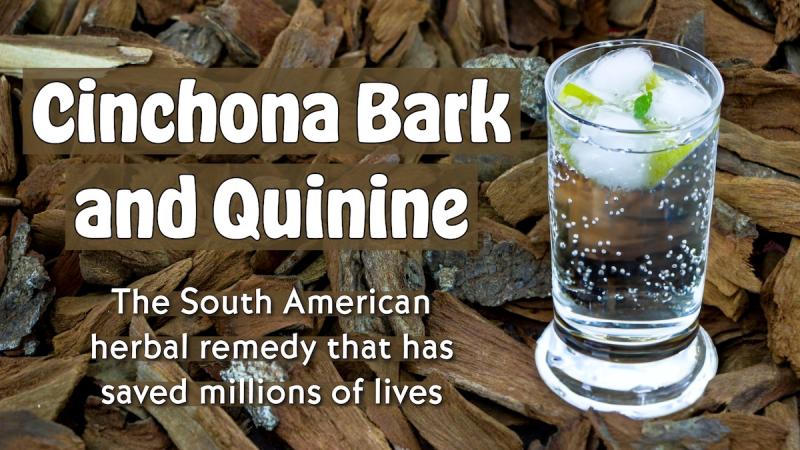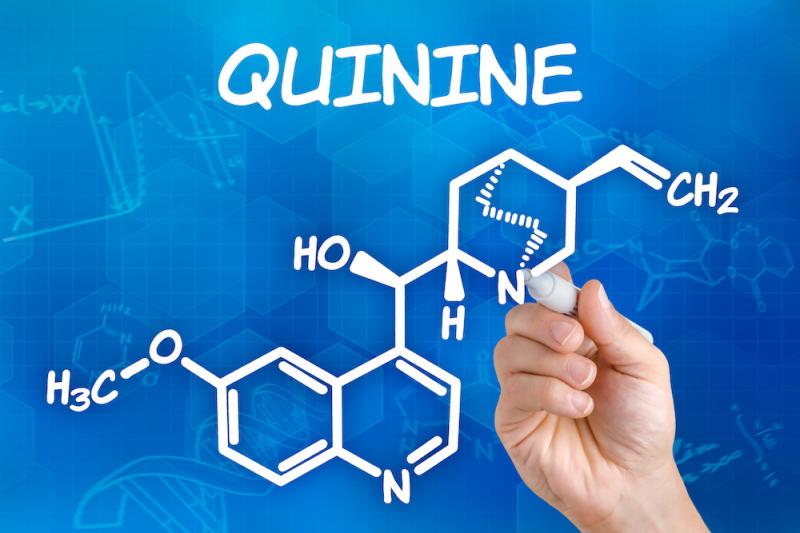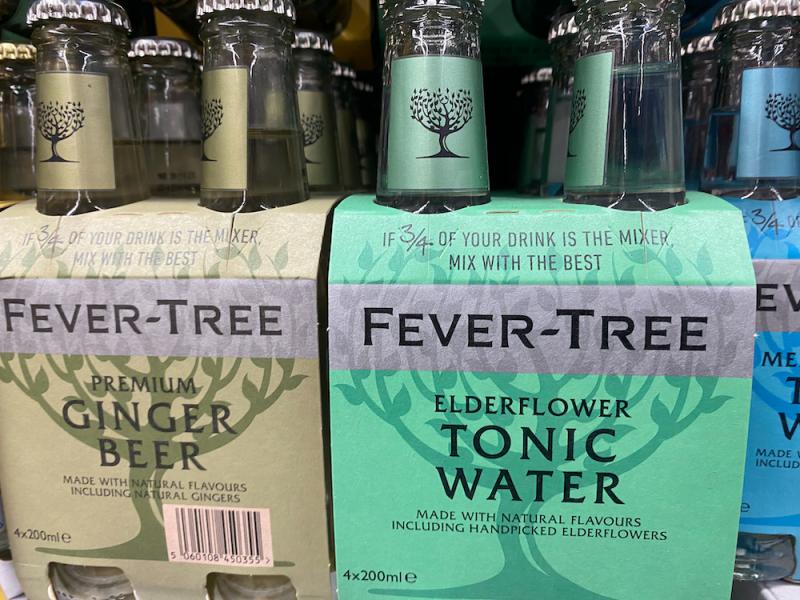
Native Americans have made many contributions to the world as is documented in the book Indian Givers: How the Indians of the Americas Transformed the World by Jack Weatherford. Much of the information about the South American herb cinchona (Cinchona officinalis and other species) comes from that book.
One of these important contributions made by Natives of the Americas was in the field of medicine. Malaria used to ravage Africa, Europe, and Asia and it has been estimated that it killed about two million people every year. It was known as the ague or shakes and was believed to arise from the “bad air” of lowland or swampy areas. Today we know it is a disease spread by mosquitos.
 When Europeans brought the disease to the New World, Native people of the Andes were able to cure themselves of it using the bark of a tree that they called quina-quina, which translates as bark of barks. The remedy was introduced into Europe in about 1630, but was only available to the rich.
When Europeans brought the disease to the New World, Native people of the Andes were able to cure themselves of it using the bark of a tree that they called quina-quina, which translates as bark of barks. The remedy was introduced into Europe in about 1630, but was only available to the rich.
In 1820, researchers in Paris isolated an alkaloid from the bark and named it quinine, derived from the Native name quina-quina. Later synthetic forms of the alkaloid were created, including chloroquine and hydroxychloroquine. Quinine and its synthetic derivates have saved countless millions of lives because it not only helps to cure malaria, it can also be taken to prevent the disease. It could even be argued that cinchona was probably one of the best-known and widely used herbal remedies at the time. Yet, few people know about it, let alone use it anymore.
Medicinal Uses of Cinchona Bark
 By itself, quinine is antibacterial and antispasmodic. It reduces tension and heat in the body. It’s rarely thought of as a medicine these days and is now used primarily as a beverage, supplying the bitter flavor of tonic water, something that’s available at every grocery store in America. It’s a story that applies to other herbal remedies, too. Much of the soda industry started with medicinal herbs or nutrients and evolved into the chemical and sugar-laden soft drinks people commonly consume. These include root beer (sarsaparilla, birch bark, and others), coca-cola (kola nut, coca leaf, and others), and 7-up (lithium).
By itself, quinine is antibacterial and antispasmodic. It reduces tension and heat in the body. It’s rarely thought of as a medicine these days and is now used primarily as a beverage, supplying the bitter flavor of tonic water, something that’s available at every grocery store in America. It’s a story that applies to other herbal remedies, too. Much of the soda industry started with medicinal herbs or nutrients and evolved into the chemical and sugar-laden soft drinks people commonly consume. These include root beer (sarsaparilla, birch bark, and others), coca-cola (kola nut, coca leaf, and others), and 7-up (lithium).
The cinchona bark has other medicinal uses besides fighting malaria. Natives used it to fight infection, reduce fevers, ease muscle cramps, and to calm the heart rate, and normalize heart rhythm. The cardiac effects are due to another alkaloid, quinidine. Being intensely bitter cinchona bark also acts as a digestive stimulant. The bark is also astringent and has been applied topically for hemorrhoids, ulcers, and varicose veins.
Part versus Whole
Because numerous drugs have been derived from plants there is often confusion in the world between the actions of whole herbs and the actions of drugs derived from them. It is often assumed that the actual plant remedy has the same actions and side effects as the drug. This is seldom the case.
Like any other herb cinchona bark contains thousands of constituents, quinine being only one. As previously mentioned, quinine is not responsible for the cardiac effects of cinchona bark and it is likely that the herbal remedy has few of the side effects associated with quinine and its various drug forms. The problem is that we’ve lost much of the traditional herbal wisdom surrounding remedies like cinchona bark, so it’s tough to find accurate information on how to use it.
Using Cinchona Bark and Quinine
 You can purchase cinchona bark online. While it is hard to say how good the quality is, it might be interesting to buy some and experiment with it. It’s traditionally used as a tea, but can also be tinctured. I imagine it would also work as a glycerite, which would also help reduce the bitterness.
You can purchase cinchona bark online. While it is hard to say how good the quality is, it might be interesting to buy some and experiment with it. It’s traditionally used as a tea, but can also be tinctured. I imagine it would also work as a glycerite, which would also help reduce the bitterness.
You can also purchase tonic water and take it as a medicine, rather than a beverage. I did this during the pandemic. Chloroquine and hydroxychloroquine are reported to act as zinc ionophores so quinine may also aid zinc assimilation. You can read about zinc ionophores in my article on quercetin.
I've found that tonic water works very well as a mixer for the digestive bitters formula I've made for myself. Mixing it with the slightly bitter fizzy water made it easier to take and tonic water by itself stimulates digestion. It also eases digestive cramping.
Our Debt to Native American Herbalism
 As we learn about herbs it is important to remember the rich legacy of herbal medicine and healing. It is good idea to look to the valuable contributions Native Americans made to the world of medicine. As Jack Weatherford points out, “From the very first contacts between the Old and the New World, European doctors recognized that Indians held the key to the world's most sophisticated pharmacy. Medicine in most of the world at that time had not yet risen above witchcraft and alchemy… By contrast, the Indians of America had refined a complex set of active drugs… This cornucopia of new pharmaceutical agents became the basis of modern medicine and pharmacology.”
As we learn about herbs it is important to remember the rich legacy of herbal medicine and healing. It is good idea to look to the valuable contributions Native Americans made to the world of medicine. As Jack Weatherford points out, “From the very first contacts between the Old and the New World, European doctors recognized that Indians held the key to the world's most sophisticated pharmacy. Medicine in most of the world at that time had not yet risen above witchcraft and alchemy… By contrast, the Indians of America had refined a complex set of active drugs… This cornucopia of new pharmaceutical agents became the basis of modern medicine and pharmacology.”
I think Mr. Weatherford is too quick to dismiss the sophisticated systems of herbal medicine that existed in India and China at the time, but the truth is it is all too easy to dismiss and trivialize the legacy of what Native people contributed to modern medicine. In my life, it was reading about Native American uses for plants in the Field Guide to Rocky Mountain Wildflowers that got me interested in medicinal plants as a teenager. So, I also owe my whole career to those insights into Native American medicine.
Few people know this, but many of the most safe and effective drugs we have originated from plants. I don't believe that replacing the whole herb with the isolated chemicals is always a wise idea. We may get stronger symptomatic relief that way, but I believe that the synergy of the whole herb offers many healing properties missing in isolated chemicals like quinine.
The fact is that we’re still rediscovering much of this forgotten heritage, which is something K.P. Khalsa and I discussed in a recent interview for my new podcast Healthy Conversations. Perhaps it's time we start to explore the origins of quinine and the drugs that have been derived from it and consider the benefits that using whole cinchona bark may offer. But even if we don't it's interesting to understand the impact one medicinal plant has had on the world.
Steven's Articles
-

-
Barberry and Healthy Personal Boundaries
A thorny shrub for fighting infections and supporting…
December
-

-
The Evidence for Berberine
A yellow alkaloid found in traditional infection-fighting…
-

-
The Sensible Use of Caffeinated Herbs
Kola nuts, guarana, and yerba mate and other herbs…
-

-
The Health Benefits and Problems with Coffee
This popular caffeinated beverage can be beneficial…
October
-

-
Understanding Caffeine & Cellular Adaptation
Preserving the power of caffeine's buzz and the…
September
-

-
Horseradish
A pungent spice for aiding protein metabolism…
-

-
Banaba or Crepe Myrtle
A beautiful tree from Southeast Asia whose leaves…
August
-

-
Monkeyflowers
Flower essences to help see ourselves more clearly…
-

-
Mariposa Lilies
Strengthening the bond between mother and child…
-

-
The Noble Bay Leaf
A common kitchen herb for aiding digestion and…
-

-
Epimedium: Horny Goat Weed
A circulatory stimulant and kidney yang tonic…
July
-

-
The Medicinal and Nutritional Benefits of Apricots
A nutritious fruit and valuable medicinal seed for coughs
-

-
Dogwoods
Asian dogwood is used to stop excessive discharge,…
June
-

-
Neem: The Village Pharmacy
A popular Ayurvedic remedy for dental and immune…
-

-
Spilanthes: The Toothache Plant
A traditional remedy for teeth and gums, as well…

